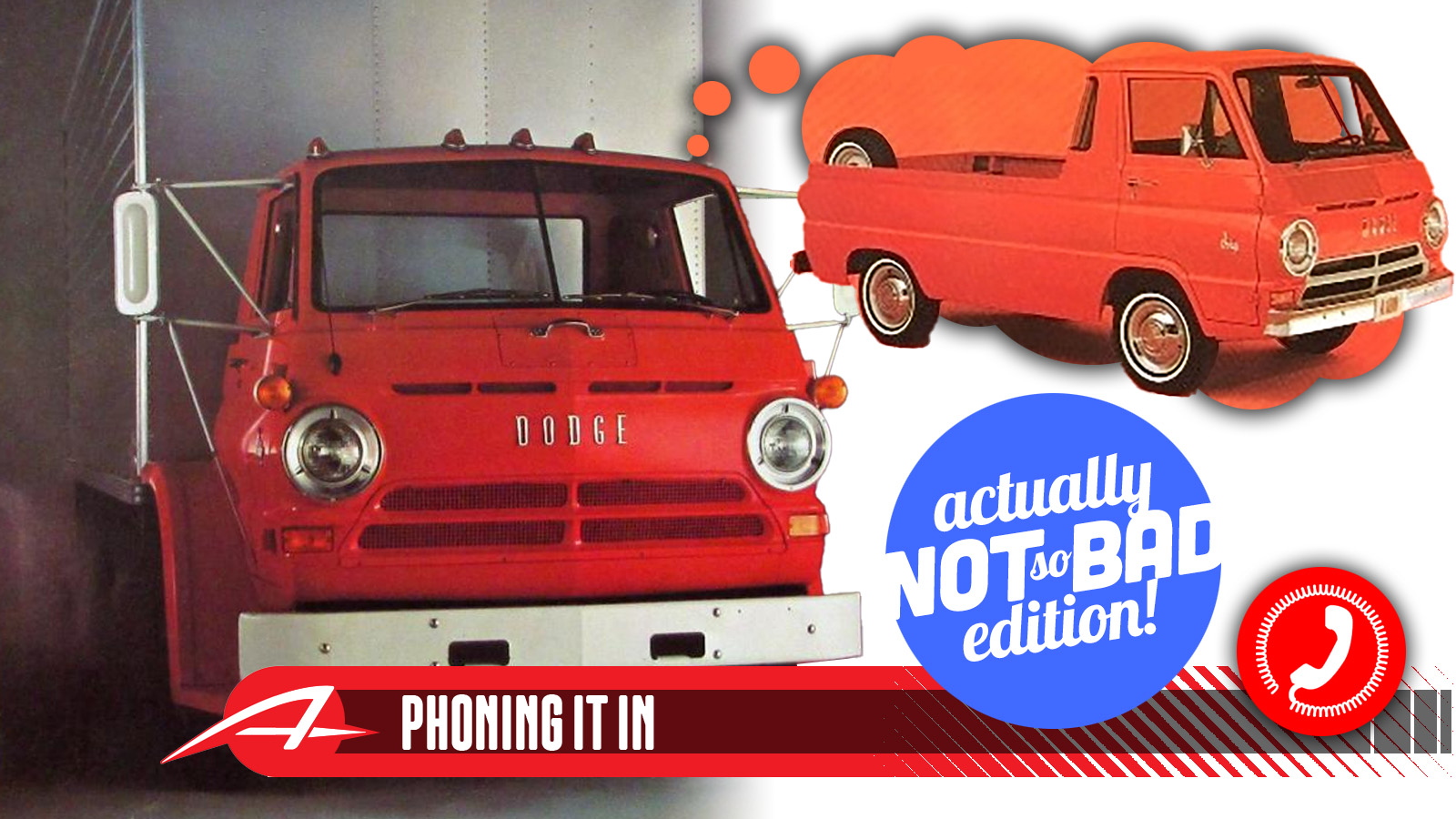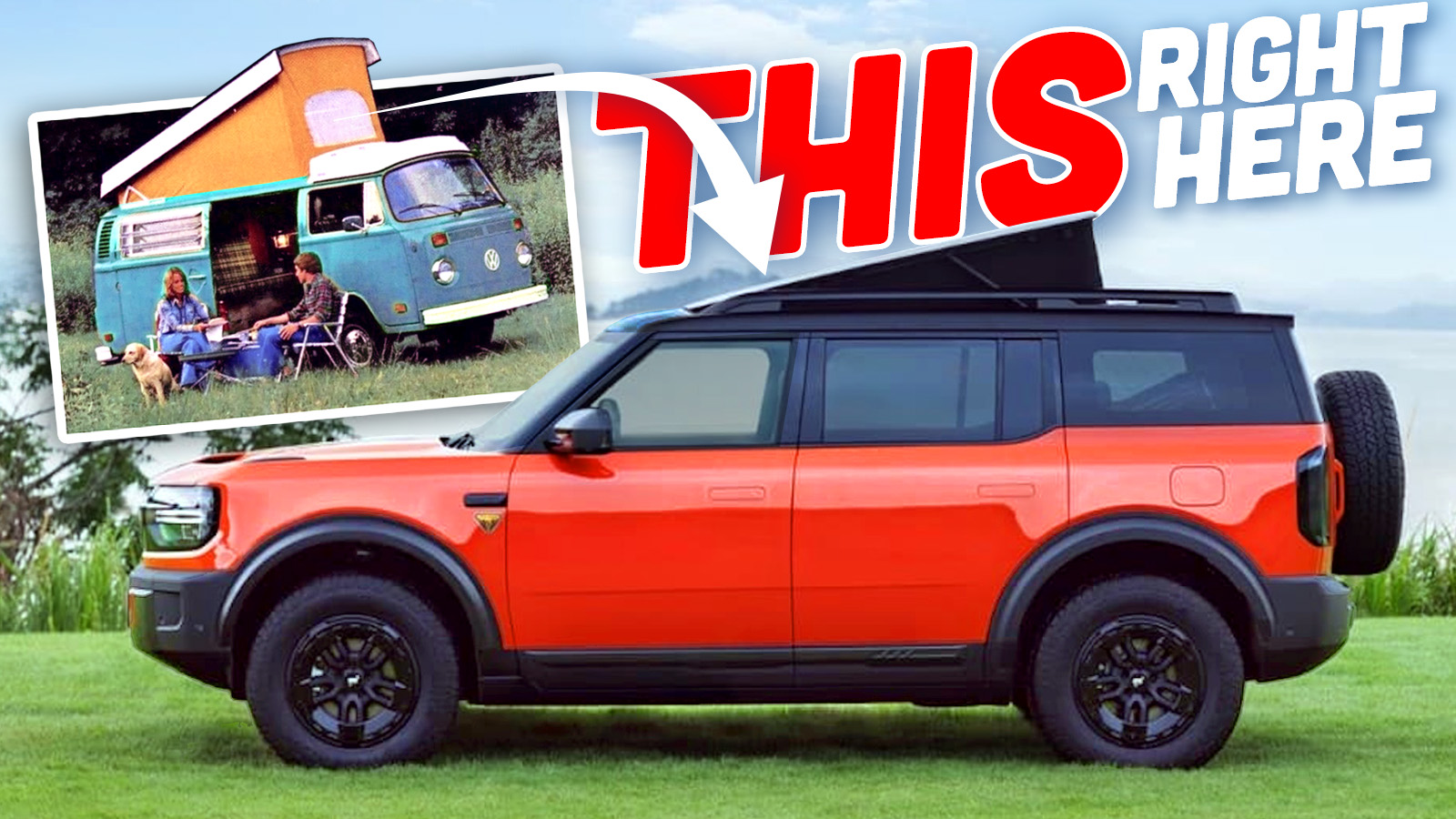The words “camper” and “Jeep” usually complement each other. Hitch a simple teardrop camper to your Jeep and you can sleep anywhere your wheels take you. But what if your Jeep was the camper? Somehow, one inventor and Jeep together figured out a way to make one of the wildest Jeep-camper combinations of all time, and it’s hard to believe it was even real. This is the Jeep Camper, and it was meant to make off-road trips in the middle of nowhere accessible for the whole family.
This story takes us back to the 1960s when outdoor recreation rose to new highs. The advent of stylish 4×4 utility vehicles made off-roading more accessible than before. Americans suddenly found themselves wheeling, boating, fishing, and enjoying two-stroke thrills on dirt bikes. The RV industry was experiencing a boom at this time, too, and consumers were spoiled for choice with gigantic motorhomes, lightweight towables, and advanced fiberglass campers.
A lot of the folks who enjoyed this new era of fun combined their activities. They’d go camping at the lake and take the boat out for a spin or go wheeling with tents along for the ride. Some RV manufacturers saw an opportunity. What if off-roading and RVing were combined into one? In the late 1960s, Jeep had its own solution to this problem. The Jeep Camper was a truck camper with its own axle that you hooked up to your Jeep and used to take your whole family on an off-road adventure.

The Inventor
The Jeep Camper couldn’t have happened without Charles “Chuck” Prater. Back in the late 1960s, Prater ran a paper delivery route for Florida’s Palm Beach Post and had a knack for inventing things. He was credited with the creation of an automatic paper bagging machine, but his bigger claim to fame would be what he did with Jeeps. It’s unclear when he got into Jeeps, but in July 1968, the Palm Beach Post reported that Prater came up with a new idea.


According to the Palm Beach Post, Prater’s invention was an affordable solution for the Jeep 4×4 owner to have a proper camper to take with them. The camper featured in the paper’s article was Prater’s prototype, and it featured a wood structure, metal siding, and a special hitching device that lashed the camper to the back of a Jeep.
Inside, Prater filled the prototype with two sets of bunk beds, a stove, a sink, a refrigerator, a wash basin, a dinette, pine paneling, and storage. In the newspaper article, Prater remarked that his camper had everything but an air-conditioner, and he was working on adding that, too.

Prater said that the eight-foot-long camper weighed 1,700 pounds. Even though that’s a small camper, it turned out to be quite a large addition to have on the back of the Jeep. Thus, the camper had its own axle with a wide track and oversized tires. The connection point between the camper and the Jeep was somewhat flexible so that the whole rig could drive through ditches and other minor obstacles without too much strain. Prater figured it would take an owner 13 minutes to connect or disconnect the camper from their rig.
This wasn’t just a one-off idea, either. Prater filed for a patent for his camper and reached out to Kaiser Jeep about the invention. Jeep was interested. In 1969, MotorTrend writes, it kicked off the “Jeep Great Escape” ad campaign, which touted the use of a Jeep for off-road fun. Jeep was also working on getting into the RV space with a dually truck for motorhome builders and adding a camper special option to the Gladiator J-3000 series.

Jeep also bought the rights to Prater’s idea, sending it off to Ward & Son Manufacturing for series production. At the time, Ward & Son was the owner of the Honorbuilt Manufacturing and its El Dorado Coach, a popular truck bed camper.
Going Wheeling With The Family

The Jeep Camper, as Jeep called it, featured refinements from Prater’s original prototype. Now, the exterior panels were corrugated and featured a dash of color. The Jeep Camper latched onto a Jeep CJ-5’s drawbar and rear crossmember with a large pin and a custom bracket. Due to the fact that the camper covered the entirety of the Jeep’s rear end, you slid this pin into place from the interior of the camper.
The Jeep Camper was also a pretty cozy place to stay. The camper featured a bed for two in the overcab area and a dinette that transformed into a bed for two more. The production version had the features from the prototype, plus a toilet, a 20-gallon fresh water tank, a waste tank, a pressurized water system, and an ice box. Options included a furnace, an upgraded stove, an upgraded toilet, a second roof vent, and more.

The design technically combined a travel trailer with a truck camper as the unit had its own axle, frame, suspension, and electric brakes. Also important was the unit’s jacks. The Jeep Camper was proudly displayed in the “Jeep Great Escape” ad campaign. Jeep pitched its camper as a way to have fun without a campground. In Jeep’s eye, you would hook your Jeep Camper up to your CJ-5, drive out to the edge of the boondocks, remove the camper from your Jeep, and then have off-road fun. Jeep didn’t intend for you to off-road with the Jeep Camper on your CJ-5. Instead, the Jeep Camper was your base camp once you got to the place where you wanted to go wheeling.
At first, the Jeep Camper was sold only with new CJ-5s, and Jeep recommended that you buy your new Jeep with the 255 cubic inch Dauntless V6 with 155 HP plus the 4.88 axle. Later, the order books opened up to anyone with a 1955 or newer CJ-5. Reportedly, a CJ-5 with a V6 had no problem holding 70 mph with the Jeep Camper and even achieved 11 mpg.

The Jeep Camper was also supposed to be cheaper than other RV options of the day. A base Jeep CJ-5 was $2,868.23 ($24,339 today) in 1970. If you followed the recommendations and got it with the 4.88 axle ($48.43), Dauntless V6 ($210.95), and drawbar ($27.68), you were looking at $3,155. However, as MotorTrend notes, that didn’t give you a roof, passenger seat, or an upgraded electrical system. If you wanted the best CJ-5 for the job, you added an upgraded alternator ($27.58), roof ($400), passenger seat ($65.34), upgraded battery ($7.19), 8.55-15 Suburbanite tires ($55.44), and HD springs ($20.12), you were all-in for $3,731 ($31,663 today).
The camper itself was $2,198 ($18,653 today). Unfortunately, this meant that the price to make a single CJ-5 into a camper could have purchased two base CJ-5s and some options for them. I think the better deal would have been to already own a CJ-5 and add the camper later.

Unfortunately, it wasn’t meant to be. Sales commenced in 1969, and the Jeep Camper was off the market before the end of 1970. American Motors Corporation bought Kaiser Jeep in early 1970, then killed off the Jeep Camper project. Reportedly, AMC brass weren’t particularly jazzed with the sales numbers of the campers and wanted to cut costs at Jeep, anyway. It’s believed that only 336 campers were built during the extremely short production run of the Jeep Camper. Today, it’s believed that perhaps 12 or fewer units are still around.
Amazingly, there is a Jeep Camper for sale right now. The Jeep Camper known as “Survivor #1” appears to be in remarkable shape considering its age. Just check out the interior photos:



This unit is said to have the second vent option, but no heater or toilet. It also has an icebox instead of a refrigerator. Sadly, the body is also imperfect, with some holes in the outer metal siding and broken exterior lights. Honestly, so long as water hasn’t destroyed the structure, this shouldn’t be too hard to bring back to camping shape.
Amazingly, the Jeep Camper wasn’t the only camper to have such a wild design like this. During about the same era, there was also a gigantic truck-bed camper that was so long it required a tag axle. There was also a bed camper for the Chevrolet El Camino, and it too had a tag axle. All of these other campers were pretty goofy by today’s standards, too, but that’s a story for another day.

If you’re interested in this Jeep Camper for sale, it can be yours for $9,800. Reach out to the seller to find out more.
On the surface, the Jeep Camper sounds bonkers. It’s wild that someone saw the CJ-5 and thought that a huge camper was a perfect fit. Yet, it makes some sense. You could have hauled the Jeep Camper out to a field or forest, dropped the camper, and then hit the trails with your family. Then, once you were done, you went back to camp, crashed for the night, then did it all over again the next day. In a way, this idea was pretty genius.








Don’t show this to David, he’ll have a new “family” camping rig by week’s end!
Wow, these are so cool!
So, does anyone here need to spend money on registering/insuring a slide in camper where you are?
Now, would they make this a slide in or a camper with the extra axle?
If it’s like where I am, then this has an advantage over trailers as you don’t need to spend the extra money on registering/insuring. That is the reason I got a slide-in for my Jeep J10.
When I saw the link to this article on the home page, my first thought was “Oh, that poor Jeep.” If a vehicle could feel embarrassment or shame, I think it would have.
No point of this over a trailer which is more maneuverable and takes a whole lot less than 13 minutes to detach.
they did suggest this was a way to make a dump bed for a Jeep at one time as well. https://www.ewillys.com/wp-content/uploads/2021/02/first_commercially_producted_cj5_camper_artical_2.jpg
Makes it seem a little more practical to have a little CJ5 around the farm that could do some actual Farm work pre-UTV of course, and then camp in it in on the weekends…Still odd.
the old Scout Extend-o-bed campers could have certainly used another axles at times I bet.
https://www.motortrend.com/f/171507647.jpg
I don’t know what turns me on more; The J-3000 Gladiator or the woman on the bunk bed in the green plaid pants. Truly a flashback to a different era
Seems like it would have been better with a CJ-6 instead of a 5 as the base, but I like the concept. Seems a little silly and impractical in practice, but solid out of the box thinking.
CJ8 for sure. but then they might not have needed the extra axle either.
I went with the 6 because the 8 didn’t exist yet 😉
That is bonkos!
My friend Tim has a BornFree with a tag axle from the 70s. That’s a tag axle after the 8′ bed on an F250 camper special though, so it dwarfs the Jeep unit.
I’m kind of surprised nobody is using tag axles on the current monstrosity ones that are too heavy for some duallies, but perhaps that would hurt the owners’ egos?
The Jeep Camper/CJ 5 (JC/CJ 5?) combo just looks like it would turn turtle in a heartbeat on an uneven surface or during highway lane changes or on cloverleaf off ramps. Not that you’d ever likely need to move out of the slow lane. I’ve owned and driven more than a few early CJs and – typically – they handled like tumbleweed. Sticking a tall 3/4 ton camper mostly in the bed doesn’t seem ideal. Perhaps that third axle was the magic that made it work, but I’m still skeptical. Interesting rig. Good story.
My ’77 Cherokee originally was equipped with the excellent AMC 401. One of the (many) previous owners had yoinked out that 401 and slapped it into a CJ5. I have to imagine they were a frustrated owner of this camper.
70 mph is terrifying in a Jeep of that vintage without a giant camper on the back. I can’t even imagine the terror of that set up at 70mph in a cross wind.
I was going to say that the CJ5 was built during the 55 mph national speed limit era but it seems like the camper pre-dates this as the law started in 1974. Still, I think people expected Jeeps, “SUVs”, and trucks to drive much slower back then. There were far fewer freeways and the highways were much slower, so driving around at 45 mph with this would have been fine and would have been similar to any other RV or camper trailer of the era. Heck, I am old enough to remember getting stuck behind RVs for many miles going 25-35 mph through any kind of mountain or windy road. And those roads were always 1-lane each way with no passing lanes.
I am also old enough and know that the expectation was slower that is why I was shocked at the 70 in the story above. my first jeep was a 1970 commando that i daily drove in the mid 1990s. Hard no, I would not drive it with a giant camper on it.
I suspect you may be mistaken on the average driving speed prior to the double nickel.
When it was lifted here (IL) our country roads reverted to a 65 limit until the nannies passed new laws to re-reduce it. Per my Dad, the initial 55 limit was also the first time it was really enforced, so everyone had to slow down a lot.
I grew up in a small town in MN in the late 80s and it was rare to see a speed limit other than 45 mph and most people drove closer to 40. Even going back today and many rural MN roads are 55 due to all the lakes, and they use a LOT of those yellow reduce speed for a corner signs. The freeways are better though.
I lived in southern IL for 4 years and yeah, 65 on rural roads there is totally fine. Some of those roads don’t have a turn in them for 100+ miles (possibly an exaggeration)
Moved to AZ when I was 10. Freeway speed limit is 75 with real speed often 85-90. Talk about a shock! Back in the 90s many of the roads leading to the mountains (Payson) were still 2 lane and it was very common to get stuck behind an RV. The memories of going 35 stuck in a many miles long que with no rear AC and 100+ temps is seared into my memories…
Also, I was more talking about the expectation of jeeps and trucks. Normal cars back then were fast and could very easily handle high speeds in great comfort. However, today we expect a lifted Wrangler, Bronco, or F350 to be just as fast or even faster than a sedan and that wasn’t the case back 50 years ago.
Was it possible to leave other truck campers of the time at the campsite on jacks like this or did that start with the Jeep Camper?
In theory, this one would be easier to remove with some wheels on it.
A standard pickup camper requires at least four jacks, or some special place to put them.
The RV/MH Museum says that the modern truck camper jack system has been in widespread use since the early 1960s. It was technically possible to leave other truck campers behind, but as I understand, it was a more involved process. Part of the marketing of the Jeep Camper was that its unique mounting design made it so that it took just 13 minutes to separate the camper from the Jeep.
Indeed, I haven’t really seen many classic truck camper manufacturers marketing their campers as being easily left behind at a campsite.
With today’s preference for short bed pickups, I’m a little surprised something like this hasn’t come back into vogue. Surely someone could work up a similar arrangement for the Maverick
eh, if they camp on the truck at all these days it is more of a roof Tent situation. the weigh tof all the accessories and in the case of Ram, the diesel results in not much payload left on a truck. so goose necks and pull behinds are much more envogue now that half ton trucks can trailer nearly as much as a 3/4 ton from 70’s.
Recall that dually that had a bed camper on it that weighed in around 5K I think and the result was a big Ram Taco on the side of the road in the rockies somewhere.
https://youtu.be/ci9jADPmVj0?si=YcwB2DrTbn-5mpXe
Except this one weighed 1700lbs, and also self-supported a portion of it on its own wheels
right, but that is the reason why it is not done with a similar arrangement these days. The Maverick squats with 4 up in the back. but technically if ordered with a tow package you can tow 4k lbs. That means the Airstream 16 could be your axle and you just have to put a ball in the hitch and go, no slapping it on and ratcheting down and so on. getting a regular bed camper on is cumbersome even with out the extra axle generally.